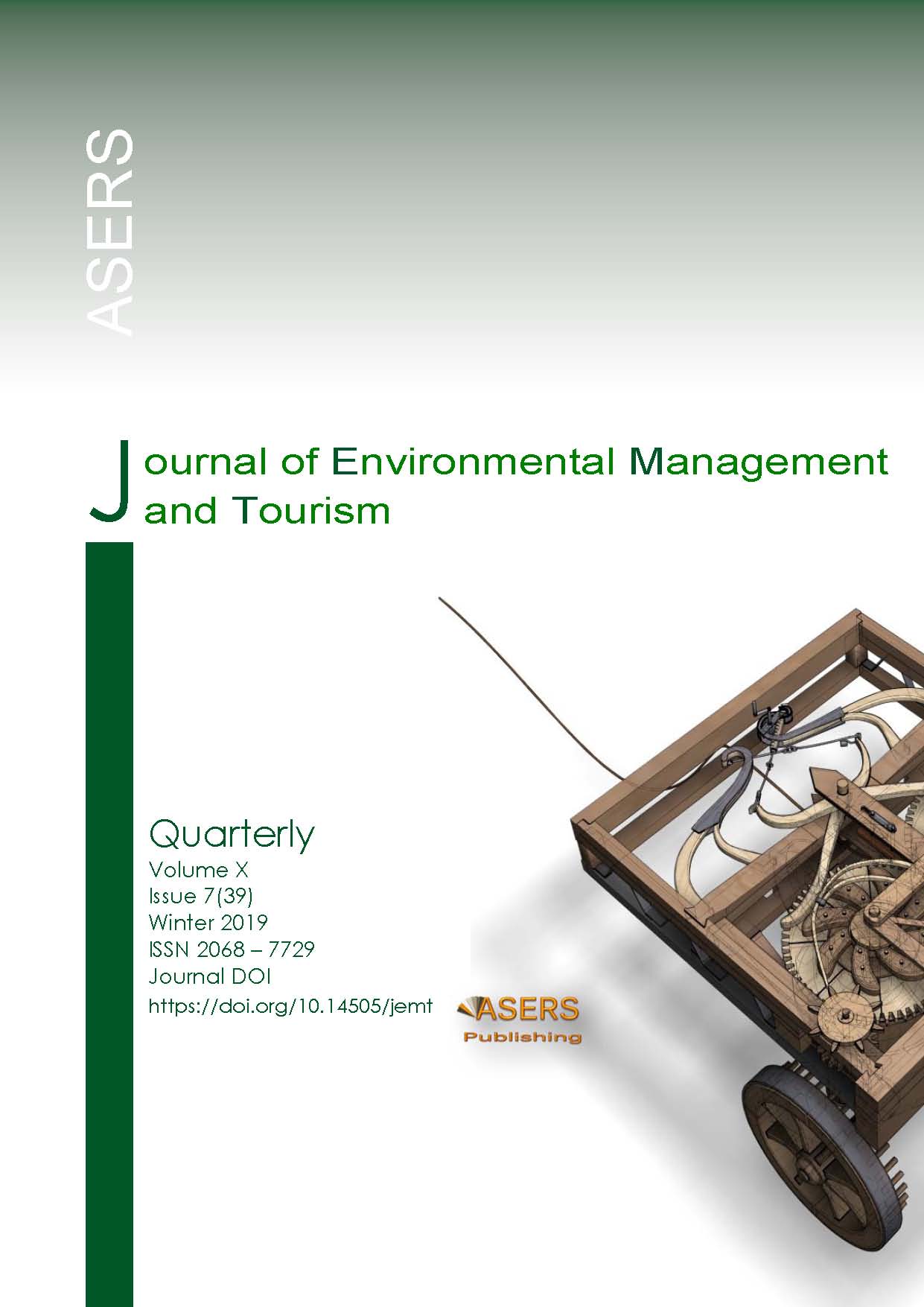Calculation of Losses from Rainfall Falling in the Design of Culverts and Drainage Systems on Highways
Abstract
The article studies the problem of calculating the loss of atmospheric precipitation to the earth surface in the design of culverts and drainage systems of objects on highways. The analysis of current research revealed that existing expressions for determining infiltration do not currently fully take into account the physical processes that occur during each phase during the development infiltration. Therefore, the purpose of this work is to develop a more physically justified expression to determine the loss of rain run off considering each phase of water infiltration into the soil. To account for the initial losses in runoff due, it is proposed to use an index level of soil moisture, which takes into account the type of soil and the initial level of moisture. An equation for calculating the rain lost through runoff from rainfall and soil type that takes into account the land use and the initial moisture level is developed. The validation of the proposed equation shows that it can be used to determine the flow losses in the design of drainage systems on highways.
References
[2] Antufiev, B.A., Egorova, O.V., Orekhov, A.A. and Kuznetsova, E.L. 2018. Dynamics of a clamped ribbed plate under moving loads. PeriodicoTcheQuimica, 15(1): 368-376.
[3] Beck, H.E., et al. 2009. Improving curve number based storm runoff estimates using soil moisture proxies. IEEE Journal of Selected Topics in Applied Earth Observations and Remote Sensing, 2(4): 250-259.
[4] Brocca, L., Malone, F. and Moramarco, T. 2011. Distributed rainfall–runoff modelling for flood frequency estimation and flood fore-casting, Hydrology. Process, 25(18): 2801-2813.
[5] Brocca, L., Malone, F., Moramarco, T. and Morbidelli, R. 2009a. Antecedent wetness conditions based on ERS scatterometer data. Journal of Hydrology, 364(1-2): 73-87.
[6] Brocca, L., Malone, F. Moramarco, T. and Singh, V. 2009b. Assimilation of observed soil moisture data in storm rainfall-runoff modeling. Journal of Hydrology, 14(2): 153-165.
[7] Brockenbrough, R., and Boedecker, Jr.K. 2003. Design and Construction Considerations for Culverts and Drainage Systems: Highway Engineering Handbook. McGraw-Hill Education.
[8] Coustau, M., Bouvier, C., Borrell-Estupina, V., and Jourde, H. 2012. Flood modelling with a distributed event-based parsimonious rainfall–runoff model: case of the karstic Lez river catchment. Natural Hazards and Earth System Sciences, 12(4): 1119-1133.
[9] Delgado-Ramos, F., Sanchez-Ladron-de-Guevara, M.S., Diez-Contreras, A. and Perez-Diaz, M. 2014. A methodology for the inventory of road culverts pathologies applied to the province of Jaen (Andalusia, Spain). Procedia ‒ Social and Behavioral Sciences, 160: 597-606.
[10] Feldman, A.D. 1995. HEC-1 flood hydrograph package. In: Computer Models of Watershed Hydrology. Water Resources Publications.
[11] Fragkakis, N., Marinelli, M. and Lambropoulos, S. 2015. Preliminary cost estimate model for culverts. Procedia Engineering, 123: 153-161.
[12] Graeff, T., et al. 2012. Predicting event response in a nested catchment with generalized linear models and a distributed watershed model. Hydrological Processes, 26(24): 3749-3769.
[13] Guidelines for the Analysis of Storm Water Runoff from Small Reservoirs. 1976. Available at: https://files.stroyinf.ru/Index2/1/4294853/4294853837.htm
[14] Kang, M.S., et al. 2009. Design of drainage culverts considering critical storm duration. Biosystems Engineering, 104(3): 425-434.
[15] Kim, K.J., Engel, B.A., Muthukrishnan, S. and Harbor, J. 2006. Effects of initial abstraction and urbanization on estimated runoff using CN technology. JAWRA, 42(3): 629-643.
[16] Najafi, M., and VaradarajanBhattachar, D. 2011. Development of a culvert inventory and inspection framework for asset management of road structures. Journal of King Saud University ‒ Science, 23(3): 243-254.
[17] Najafi, M., and Bhattachar, D.V. 2010. Development of a culvert inventory and inspection framework for asset management of roads tructures. Journal of King Saud University ‒ Science, 23: 243-254.
[18] Nakonechna, A.M. 2018. International billion on human right through of the prize of need approach. Journal of the National Academy of Legal Sciences of Ukraine, 25(3): 28-45.
[19] Nekrep, M.P. 2002. Manual Conversion of Roof Drainage of Large Objects, Project Documentation. Mikro Malta d.o.o..
[20] Panjen, J. 1996. Basic aspects of drainage of highways. In: Proceedings of the International Conference (pp. 25-34). University of Ljubljana.
[21] Patyukova, R.V., Minskaya, A.N., Sergienko, V.A. and Tarasenko, E.V. 2018. System of technologies for building the information space: Coverage tools. Media Watch, 9(3): 418-425.
[22] Penna, D., et al. 2011. The influence of soil moisture on threshold runoff generation processes in an alpine headwater catchment. Hydrol. Earth Syst. Sci., 15: 689-702. DOI: 10.5194/hess-15-689-2011
[23] Perrin, J., and Jhaveri, C.S. 2004. The economic costs of culvert failures. 83rd Annual Meeting of the Transportation Research Board, National Research Council. Washington, DC, U.S.A.
[24] Poškus, M.S., Valickienė, R.P. and Kuzinas, A. 2018. Making the right decision: Subjective evaluation of pro-environmental public service announcements. Public Policy and Administration, 17(4): 619-633.
[25] Rosa, L.D.S., et al. 2018. Study on methods of determination of an ecological flow for the management of water resources of the river basin on Maracaçumé River. PeriodicoTcheQuimica, 15(30): 27-34.
[26] Syachrani, S., et al. 2010. A risk management approach to safety assessment of trenchless technologies for culvert rehabilitation. Tunnelling and Underground Space Technology, 25(6): 681-688.
[27] Terleev, V., et al. 2019. Models of hysteresis water retention capacity and their comparative analysis on the example of sandy soil. Advances in Intelligent Systems and Computing, 983: 462-471.
[28] Tramblay, Y., et al. 2010. Assessment of initial soil moisture conditions for event-based rainfall–runoff modelling. Journal of Hydrology, 387(3-4): 176-187.
[29] Tramblay, Y., Bouvier, C., Ayral, O.-A. and Marchandise, A. 2011. Impact of rainfall spatial distribution on rainfall-runoff modelling efficiency and initial soil moisture conditions estimation. Natural Hazards and Earth System Sciences, 11(1): 157-170.
[30] Tramblay, Y., et al. 2012. Estimation of antecedent wetness conditions for flood modelling in northern Morocco. Hydrology and Eart System Sciences, 9(8): 9361-9390.
[31] Wójcik, A., and Wąsowicz, J. 2017. Greenhouse gas emissions as regards the sectors in the European Union countries. Public Policy and Administration, 16(4): 672-685.
Copyright© 2025 The Author(s). Published by ASERS Publishing 2025. This is an open access article distributed under the terms of CC-BY 4.0 license.
